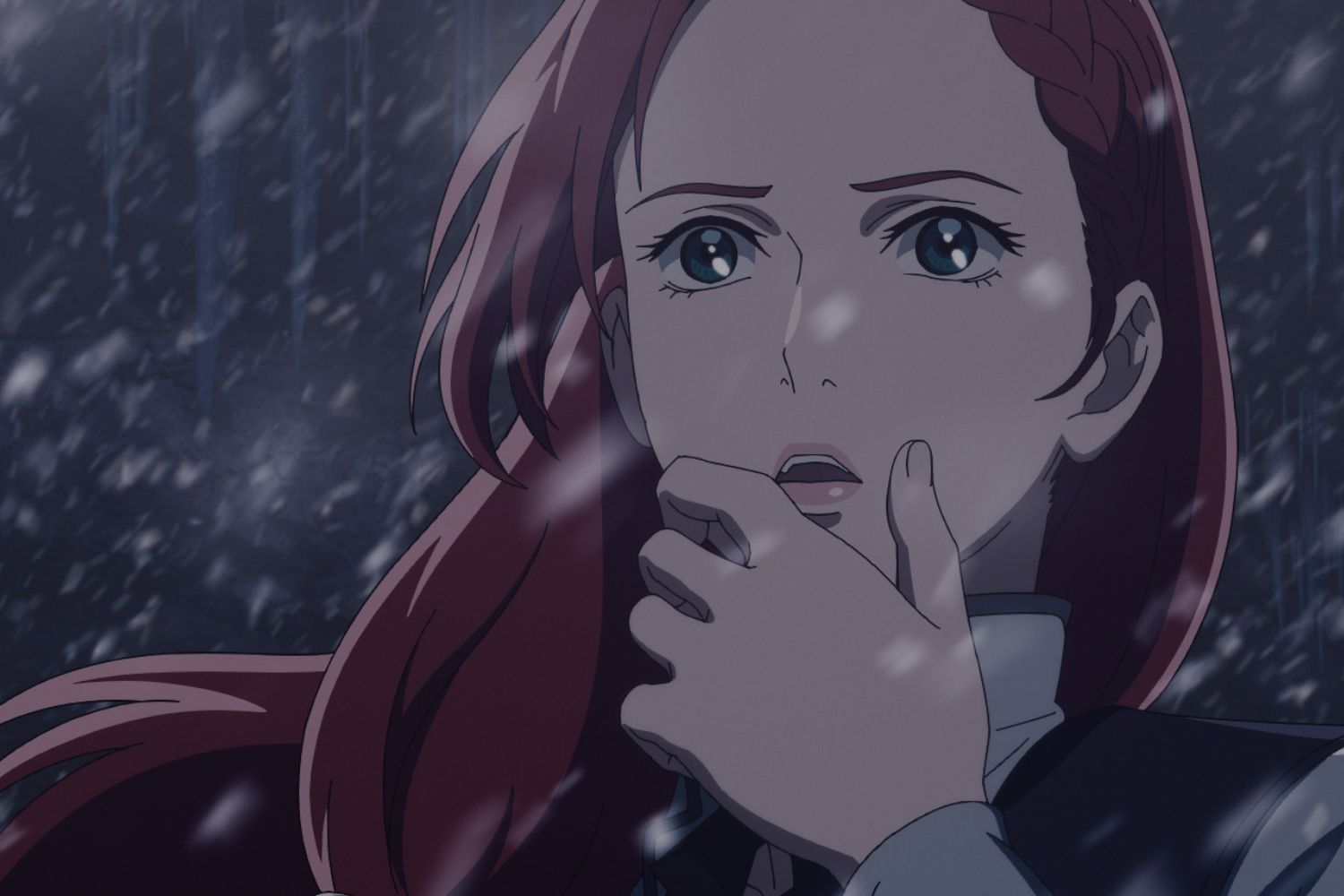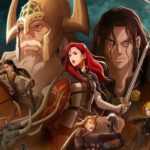When you think of the people behind the success of the Lord of the Rings movies, three names should come to mind. The first is obviously Peter Jackson. He directed and gets most of the acclaim. But Jackson worked very closely with writers and producers Fran Walsh and Philippa Boyens and that pair is probably even more responsible for crafting the stories of those original three masterpieces.
Now, for the release of The Lord of the Rings: The War of the Rohirrim, the whole trio is back. Jackson and Walsh are executive producers but Boyens was much more involved as a standard producer. It was she who ultimately decided on the story the animated film was going to tell, and was there with her hands on it every step of the way. She worked with the writers, she aided director Kenji Kamiyama, and now she’s doing interviews to promote it.
io9 sat down with the Oscar-winning writer and producer to dive into her involvement with the film. We talked about expectations, developing the story, and keeping the Tolkien canon while also adding to it. We even discussed the relationship between the theatrical films and the Amazon TV show, The Lord of the Rings: The Rings of Power, and the decisions to bring back some of her collaborators from the original films. Check it out.
Germain Lussier, io9: I’d like to start with the big picture a little bit because you’ve been there since the beginning. It’s been almost 30 years since you guys started working on the original films. At that time, could you ever have imagined the cultural impact the work would have when you were originally writing them?
Philippa Boyens: Oh, absolutely not. Absolutely didn’t. We were literally, honest to God, just trying to make it work as a film. Trying to make sure that we were doing something that was going to work on film for its own sake. We had no concept of like blockbusters or anything like that at all. I can honestly say that.
io9: So there’s never a time when you guys were sitting around and be like, “Maybe we’ll win awards and maybe we’ll make three more movies and then we’ll make an anime.”
Boyens: No, no, no. Can I tell you one time, once it got green-lit, we had to go from two scripts to three scripts. It was a bit like a train coming down the track at you and we were laying the tracks, Fran and I especially. We were writing and trying to get ahead of production basically. And I don’t know, we just pulled some insane hours and our poor kids suffered a little bit, like, “Where’s mommy?” But I remember she actually said to me once, she said, “You know, there is no reward for this.” [Laughs] Beyond the work itself, she meant. And I said, “Yeah, I know.”
io9: But clearly she was wrong. There were plenty of rewards. We’re still here and still talking about it. So tell me about the decision to make this movie . Did Warner Bros. come to you guys?
Boyens: Yeah, Warner Bros came to us in about 2019, I think it was. And they asked the question whether we’d have any interest in going back to the world with an animated film. I think they knew enough to not ask us to do a live action film because we were definitely not there yet then. I personally had a little bit of skepticism, not that I didn’t think you could do an animated film. It was just more that I didn’t know how to do it, if that makes sense. I didn’t know what form it would take and then which story. You know, we went through a few processes and we understood that we wanted it to be a standalone story, that we wanted it not to involve our characters or be centered around characters from the live-action films. And we also knew that we wanted to introduce fresh characters to it. And so then it was a process of trying to marry those two things. And it wasn’t until Warner Bros. actually said, “What about anime?” that this story immediately popped into my brain. And it was like, “Oh, wow.” Maybe going through that process that we’d gone through prior helped me go, “Okay. The Rohirrim.”

io9: So what was it about this story that spoke to you? Clearly there could have been, not an infinite amount of stories, but other stories. And I know that other ones were pitched to you. So I’m wondering, what was it about this one that made you sure?
Boyens: No, they weren’t really pitched to us. Not really. I don’t think anyone would have dared to try and pitch us a story. [Laughed] There were some ideas some people had that were thinking where we might go. But no, this particular story and the reason why was really I thought because it would fit with the tradition of great Japanese filmmaking. And that is to say, if you look at the story that’s in the book, it doesn’t actually neatly fit with what you would call the normal hero’s journey tradition. Actually, the biggest, most epic battle happens at the end of the first act. And then the story becomes, in a funny kind of way, more intense and closes in on itself. And it even brings in threads of different kinds of genres. There’s almost like a ghost story kind of creeping in elements, that sort of thing. And that started to remind me of like a Miyazaki film. It reminded me of the great Kurosawa films, especially the character at the heart of it, Helm. He felt a character that would not feel out of place in a Kurosawa film.
io9: Oh, absolutely. Absolutely. So you’re using the source material from the appendices here as a basic skeleton. How did you get from that to the finished movie making sure these characters and places fit into this world that you created?
Boyens: Yeah. I started working with two young writers who were really great. They were good, but they didn’t they weren’t quite steeped in that world of Tolkien, I think. And they were lovely to work with. But in the end, we’d reached a point where they were just not sure where else to go with the story. But Kamiyama especially, and I certainly felt it too, felt like we weren’t there. We didn’t have it. You know when you’ve got it and we didn’t have it. And that was when I started looking at who else could do it. And one of the characters that I felt we were always struggling with was Hera. So when we actually bought on a young female screenwriter with Phoebe [Gittins], she kind of knew what was wrong here. And what was wrong there was this character wasn’t speaking to young women today. She was like “She needs to be able to own her own fear. She needs to be able to make mistakes. She needs to be able to not know what to do next.” She doesn’t have to be a girl boss. She doesn’t have to be some kick-ass female. She doesn’t need to be Wonder Woman.
And so as soon as we got our head around that and began to relish and enjoy the fact that she has no agency in the beginning—although actually she starts in a place where she’s given a lot of leeway by her father. And then the world comes crashing in on her when she understands, “Oh, wait, I’m just a pawn in this game of thrones, basically.” She’s not going to have a choice of who she’s going to marry or whether or not she will marry. And as soon as we started looking at it through her eyes in a more appropriate way, the story shifted completely and started to grow from there. And then the relationship between the father and daughter became a natural consequence of that.

io9: That’s fascinating because it becomes the beating heart of the film. But, like you said, Hera is more of your creation, not Professor Tolkien. So I’m wondering, is there any approval process? Do you have to tell someone “We’re taking that nameless character, her name is now Hera, and now she’s this”? Obviously he’s not around anymore, so do you have to get proof of the estate or anything to create a new, canon Lord of the Rings character?
Boyens: No. No, we don’t. But I tell you what we do is we try not to do things lightly and we try to make them feel as authentic, I especially, as I possibly can based on the years of working with Professor Tolkien’s work. But can I say this? The other thing that I do know from experience is that nothing we do changes the books. The books will always stand as this incredible monumental work of imagination. And what we’re doing is literally just adapting, interpreting, and bringing to another medium. And, funnily enough, I don’t think Professor Tolkien would necessarily… he probably would have hated a lot of choices that were made. But I think at the same time, I think there are choices that he would have approved of. And I think there are definitely elements. Some of the artwork is so beautiful. And I think he would have 100 percent approved of that. Howard Shore’s score, I think he would have loved. Ian McKellen’s Gandalf, I think is perfect. I think it’s always going to be that push-pull of some stuff that will feel immediately is right. And then there’s always a moment where, as much as I love Professor Tolkien and his work, it’s a film. It’s got to work as a film. And you’ve got to make those hard choices.
io9: No, that makes sense. I know that this whole franchise has this weird complicated rights issue that allows Amazon’s show to run at the same time as you guys are now making movies. Is there ever any communication between the teams? And does that show at all impact what you guys are doing?
Boyens: No. Not really, to be honest. Although one of the nice things is that I’ve got friends who’ve worked on The Rings of Power. I think they’ve used some of the people from Weta Workshop, etc. They’re drawn upon the wealth of people who have a bit of knowledge of having worked in Middle-earth, per se. But no, I don’t see any rivalry. I’m sure they don’t either because we’re actually working in a very different space. We’re literally working in different ages of the world of Middle-earth. The way I’ve always seen it is, and I think any form of film works in this way, is that people get an appetite for something. So the more successful one thing is in that sphere, the more it feeds that desire to see more.
So we only can wish them well and I’m sure they feel the same way about us, because we’re doing something very different to what they’re doing. But yeah, in terms of communication, not really, and that’s for no other reason than kind of like as much as Peter stepped back to allow Kamiyama to make his own film. I mean, he was always there if we needed him, but he also very much wanted Kamiyama to make his own film. We’ve kind of done the same thing. Like “You go do you,” because that’s the best way for you to proceed.

io9: The thing I love about that show and this movie is that they still always pay respect to the original three films—be it with costumes, with the sets, the general design etc. And here specifically, not only do you bring back Howard Shore’s music, but Miranda Otto as Eowyn and a few other little things. So I’m curious about Howard Shore’s score and Miranda Otto as the narrator. How did those two things happen to keep the links going?
Boyens: Yeah, Eowyn happened because this really was our guide through this world. We were bringing in so many threads and it allowed us to tell the story a little bit more concisely, to be brutally honest, as part of the reason for the narration. But then we also saw that actually we had a chance to bring back a beloved character from the live-action films in an interesting way. And so I remember talking to Miranda about it when we were conceiving of the whole thing. And she loved the idea that I said, “Eowyn is the princess who ended up in Gondor. And now she’s speaking. She’s telling a tale to her kids and maybe she’s a little homesick.” And what that gave us is a much more personal voice-over than you would normally get sometimes in voice-overs. A personal quality to it, an emotional quality to it. So that was where that came from.
io9: And then Howard’s music, the choice to bring back?
Boyens: Why would you not?
io9: [Laughs] Yes, that’s the correct answer.

Boyens: That would be grounds to prosecute if you didn’t use Howard Shore’s music. It would be kind of illegal, right? So I actually got a very sweet communication from Howard when I reached out to him. And he just kind of gave it his blessing, which did not surprise me because he has such a generous creative spirit and is a monumental talent in and of his own right. I think Howard seemed to feel happy that the music lives on.
io9: At the beginning of our chat here, we talked about Warner Bros. coming to you guys about an anime because you weren’t ready for live-action. But now we know we are returning to live-action with The Hunt for Gollum movie and some other mysterious thing. I’m very curious about those but knowing you can’t say much, I’m wondering what was it about the process of making this film that made everybody be like, “Okay, let’s go back to these like almost sacred texts of the live-action Boyens, Walsh, Jackson, Rings movies.”
Boyens: It was falling back in love with it, to be honest. It was feeling like, “Oh, maybe there is some more story there to tell. And also was starting to feel a bit of an appetite for it. I don’t know whether it was because of covid or post-covid but I think a lot of people returned to those films during covid, to be quite honest with you. And we started getting that uptick in people writing to you, all of that sort of stuff. And it felt appropriate. Maybe it’s nostalgia. I don’t know what it is. Because really you are always dependent on the audience and that’s exactly the way it should be. We should be making these films for people to enjoy. And the best way to do that is to know that there’s an audience out there for them. So let’s see. Let’s see what happens.
What happens is The Lord of the RIngs: The War of the Rohirrim hits theaters this weekend.
Want more io9 news? Check out when to expect the latest Marvel, Star Wars, and Star Trek releases, what’s next for the DC Universe on film and TV, and everything you need to know about the future of Doctor Who.
Read the full article here












